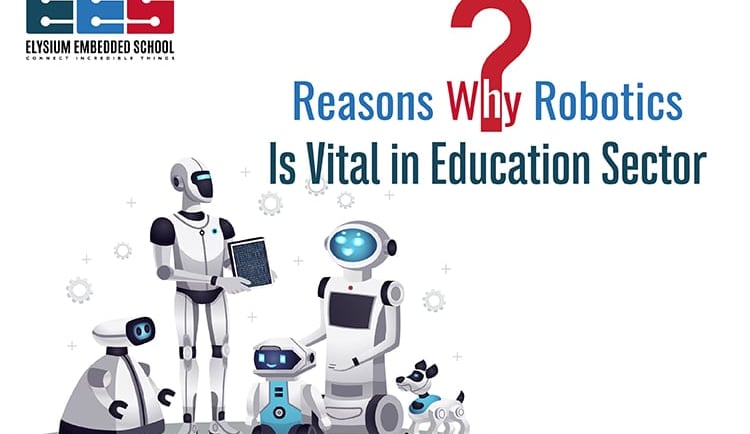Empowering Students through Robotics and Embedded Systems Training
In the era of technological innovation, the empowerment of students with practical skills in robotics and embedded systems is essential.
ARTICLE
1/7/20253 min read


Empowering Students through Robotics and Embedded Systems Training
In the era of technological innovation, the empowerment of students with practical skills in robotics and embedded systems is essential. It not only fosters creativity but also equips learners with tools to solve real-world problems and embrace the technological advancements of tomorrow.
Hands-on learning: the foundation of success
Hands-on learning is at the heart of successful education in robotics and IoT. Projects, such as programming microcontrollers, assembling robots, and integrating IoT systems, will help students achieve hands-on learning beyond theoretical knowledge. This experience encourages problem-solving skills, critical thinking, and adaptability - qualities highly prized in today's job market. Students also learn to troubleshoot and optimize systems, an important skill in developing robust and efficient solutions for real-world applications.
A crucial advantage of experiential learning is that it demystifies complex concepts. For instance, programming a robot to navigate through a maze or designing a smart device for home automation helps a student understand concepts related to algorithms, sensors, and communication protocols. This kind of learning bridges the gap between what is read from textbooks and actual applications, building confidence and competency in students' abilities.
Academia and Industry Integration
The inclusion of robotics and embedded systems training in academic curricula bridges the gap between theoretical education and industrial applications. Students learn to design, build, and optimize systems that reflect industry standards, preparing them for careers in automation, artificial intelligence, and electronics. This alignment ensures that graduates are ready to tackle challenges in sectors ranging from healthcare to aerospace.
Industry partnerships in this regard enhance these synergies much further. During internships or workshops, for example, actual projects on next-generation technologies challenge the students further, while working with industry-level expectations and exposing them to methods of industry-specific applications. Even something as practical as designing an IoT-enabled robotic arm prototype gives the students fantastic exposure to being exposed to proper industry-grade instruments and methodologies.
With the infusion of robotics and IoT technologies into various industries, there is also a growing demand for more skilled professionals. Training in these areas future-proofs students' careers through competitive advantage. Proficiency in robotics and embedded systems gives students such opportunities as engineering robotics, developing IoT devices, and an automation specialist among others and thus making the student indispensable to most organizations.
Besides, these fields keep changing with the introduction of new technologies and applications. Students who are trained in robotics and embedded systems are capable of handling present challenges and adapting to future trends. For example, the current advancements in machine learning and edge computing are shaping the landscape of IoT and robotics, opening doors to new possibilities for innovation and growth.
Innovation and Creativity
It allows the student to think beyond the boundaries and comes up with some creative solutions in developing a smart home system, designing autonomous robots, or developing wearable devices. Students feel more confident when applying their skills to solve real-world problems in robotics and IoT projects.
Innovation usually arises from the need to solve and address societal problems. Students involved in developing robotics and embedded systems are leaders towards improving projects such as environmental monitoring, disaster response, and health accessibility. For instance, developing drones that can help in search-and-rescue activities or devising wearable devices for measurements of human health metrics shows how these technologies can change lives.
Role of Mentoring and Collaboration
Good training in the areas of robotics and embedded systems is often acquired through mentorship by experienced professionals. It also collaborates with friends, which further exposes students to best practices that are currently becoming trends. Thus, collaboration stimulates teamwork and varying problem-solving orientations. Collaborative learning environments actually simulate real life work settings characterized by interdisciplinary teamwork required for success in most cases.
Hackathons, competitions, and collaborative projects are great platforms where students can present their skills and learn from one another. It not only creates creativity but also gives a sense of accomplishment and motivation to handle bigger challenges.
Incorporation of Emerging Technologies
This constantly evolving field includes robotics and embedded systems in artificial intelligence (AI), machine learning (ML), and blockchain technologies. So the integration of all these in students' training is to gain a greater extent of their skill sets in a more holistic sense.
For example, robotics through AI lets machines learn from their surroundings, opening doors for autonomous systems in sectors such as agriculture and logistics. In like manner, blockchain in IoT makes security and transparency much better than they could ever be for the application of the supply chain and smart cities.
Conclusion
Empowering the future through the education of robotics and embedded systems in students can only be said to be investing in the future. It makes them better in the skills they use, confident about themselves, and very creative within the rapidly evolving technological landscape. Fostering hands-on learning, bridging academia and industry, and innovativeness makes such training more capable of bringing forth the well-equipped next generation of leaders into tomorrow's innovations.
As the industries embrace automation and connectivity, students trained in robotics and IoT will play a role at the cusp of shaping this world that's much more intelligent and agile. Through traditional education blended with practical experience and mentorship, we will unlock students' potential to drive meaningful change and technological progress.
